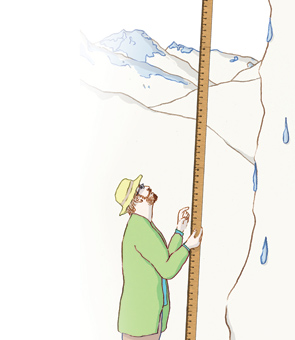
Scientists have long known that the earth's glaciers can be read like giant, icy history books, filled with clues to past climates, volcanic activity, even which plants flourished when. Over the past few years, rapidly receding glaciers have also become the most compelling signs of global warming, vast symptoms of the climatic changes underway around us.
But while glaciers in the Alps, the Rockies and the Arctic have been studied by countless scientists, those in the world's highest mountain range, the Himalayas, have not. Which makes D.P. Dobhal's work all the more important. Dobhal, 45, a geologist turned glaciologist, works for the Indian government's Wadia Institute of Himalayan Geology, one of the few organizations studying what's happening to the high-altitude Himalayan glaciers (they're receding, and fast) and what that might mean for the hundreds of millions of people downstream who rely for their livelihoods on snow- and ice-fed rivers (in the short term, it means floods; in the medium term, drought). "Glaciers are very sensitive to climate change. They are a way of diagnosing what's happening," says Dobhal. "But in the Himalayas we still know very little, and we started very late." There are decades of data from other glacial regions, but accurate and regular measurements in the Himalayas go back 15 years for one glacier, and only a few years for several others.
Dobhal uses simple bamboo stakes to measure the rise and fall of glacial mass. It's risky work, carried out at altitudes of up to 13,120 ft. (4,000 m), but Dobhal goes about it in a quietly dutiful way, unfazed by the danger. "Because I'm a government servant, whatever I do I'm doing for my country," he says. "I've been assigned to study certain problems and so I work on them. That's it." It helps that he was born in the Himalayan foothills and loves the incredible peaks that loom over him as he and his team trudge up another rocky slope with their equipment. "Glaciers are the best indicator we have," he says. "It's where I need to be."